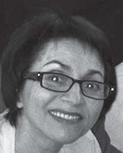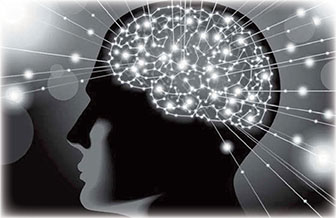

At the Crossroads
Luba Kessler,
Issues in Psychoanalytic Education Editor
Luba Kessler, M.D., is in private practice in Roslyn and Forest Hills, New York. Formerly on the Institute for Psychoanalytic Education faculty, New York, and the residency program staff at Zucker Hillside Hospital, Northwell Health Systems.

Luba Kessler
As the editor of the Issues in Psychoanalytic Education column, I am planning a series of contributions examining the present-day place of psychoanalysis in biology and culture. Before proceeding with such prospective reflections, however, some statement of the premise seems in order.
Psychoanalytic training and education have developed their basic precepts, and are being continually informed by multiple theoretical and clinical perspectives. It was in the spirit of highlighting these perspectives that articles on comparative methodologies in examining psychoanalytic theory and process were featured in preceding articles. [See “Teaching a Critical Perspective on Psychoanalytic Knowledge,” TAP 51/1, page 5, and “New Educational Approaches to the Study of Psychoanalysis,” TAP 51/4, page 1]. In this issue, Doug Chavis offers his searching reflections to the ongoing debate about psychoanalytic process and frequency as a feature of training. Such examinations and the integrations based on them seem essential if we are to put our discipline on firmer footing. Based on ongoing reviews of the essential properties of the psychoanalytic field, the intended prospective contributions will aim to look at its liminal boundaries. Their purpose will be to probe whether psychoanalytic education can be advanced beyond the customary syllabi of teaching depth psychology by examining continuities with human biology and culture.
The “crossroads” I refer to are the internal interchanges of psychoanalytic pluralism and the interdisciplinary flow of insights.
Psychoanalysis requires rigorous application of its own methodologies. Nevertheless, the invitation to step out of the perimeter of intrinsic psychoanalytic inquiries follows a predicate that the mind does not exist nor does it perform its psychological functions in a vacuum. It advances the biological agenda of human existence and does so through participation in the culture. In fact, the mind’s indispensability lies in the dynamism of its role as the interlocutor between them. The hermeneutic meaningfulness of psychoanalysis gains, rather than risks losing, its full value by recognizing and admitting the resonances of its findings in the biological and in the cultural exigencies of life.
Can psychoanalytic education be advanced beyond the customary syllabi of teaching depth psychology by examining continuities with human biology and culture?
The concept of projection may be a suitable example.
Some psychoanalytic concepts have gained such wide acceptance and usage as to become nearly commonplace, to be accepted at face value. Yet paradoxically, having gained popular appropriation of their psychoanalytic provenance, the full portent of their meaning often dissipates in the process. They become a commodity. The term “projection” may be one of such popularized words. By becoming a terminological commodity, it loses the deep implications discovered by psychoanalysis. Even in psychoanalytic discourse itself, it threatens to become humdrum. How much more resonance can the meaning of the mechanism it denotes regain, however, when traced to the biological lineage of its applicability on one hand, and seeing its tenacious entrenchments in a given culture on the other.
Finding Biology in the Mind
Early psychoanalytic theoreticians, Freud and others after him, considered psychological mechanisms as being modeled on physiological processes. Consider the following: If the psyche deploys the extrusion of the unacceptable disturber of the emotional equilibrium by the method of projection, the body does it by automatic responses such as vomiting or coughing on signals issuing from the brain stem nuclei specifically dedicated to the performance of such physical riddance. An analyst can appreciate that a crucial function of preserving the integrity of the selfhood of the organism is at work in both domains. The meaningfulness of such psychoanalytic findings rests on this analog of biological purpose which extends into the psychological sphere of the mind. Such rootedness highlights the biological necessity carried by the workings of the mind.
Finding the Mind in Culture
In the social field, the meaningfulness of the mechanism of projection may require an exercise of teasing apart the psychosocial amalgam that is culture. In his visionary 1869 essay The Subjection of Women, John Stuart Mill wrote how nearly impossible it is to argue against a long practiced cultural habit, be it slavery or disempowerment of women. It is as if by virtue of being long in use the practice gets the justification that it must be right. Such is the degree of conviction that you cannot win by logical or judicious arguments against it. With its cultural reality long in the making it lives as an embedded cultural a priori. A society impregnated with such a cultural given will be bent on its maintenance. A contemporary analyst might say it becomes an implicit procedural code. If a given cultural practice encodes societal actions on the basis of a prejudiced belief, it becomes a blueprint for the societal attitude, a norm.
However, the reason for the inculcated prejudice is psychological, and modern psychoanalysis knows it is a product of the mechanism of projection. Modern psychoanalysis knows this projection is compelled by the dire need to be rid of an experienced psychic disturbance of a given historical moment. What will forge its staying power in the society is the potent welding of such shared psychological need with the cultural prerogative of making it into an institution for all.

Psychoanalysis understands further that even when advances in civilization reject prejudice through societal reformation, it is likely to continue to live on in the unconscious sphere, not only immune to (Mill’s) reason but altogether out of its reach. After all, racism persists but if you ask, no one is a racist. The individual unconscious preserves the un-metabolized belief which lives on in the encapsulated social idiom of a prejudice. Bodies and minds get caught in the crosshairs of cultural projections.
Already in his 1913 cultural study, Totem and Taboo, Freud described projection as a basic wholesale psychological method of disowning the unwanted attributions—a hundred years before the Black Lives Matter movement called out the unconsciously persistent prejudice in America. The elaborations of this psychological mechanism in the individual case history of the Rat Man of 1909 served to foster Freud’s look at culture as a socio-psychological organization. From the 1950 publication of his letters to Wilhelm Fliess, we can now add another antecedent historical note. It is in one of them that the term “projection” first appears. The 1890s are considered to be a pre-psychoanalytic phase in the work of Sigmund Freud, a time of transition from his study of the nervous system. Is it this span of vision from the biological to the cultural through the examination of the human psyche that is an important measure of Freud’s genius? How do we reclaim this heritage and transmit it to the future generations of psychoanalysts?
We are a profession deeply impressed by the dynamism of mental life and committed to the explorations of its meaningful subjectivity. Our insights and lexicon have infiltrated popular culture and they have deeply influenced the academic discourse in the humanities. We endeavor to inform and educate the public with progressive position statements and with community consultancies. Yet, at the same time we grieve over the under-appreciation of the value of psychoanalysis in our professional surround and struggle to convey the truly magisterial reach it has in understanding human life. Why is that and what could the remedies for it be?
In the early years of psychoanalysis, the standard explanation rested on the idea of the resistance to the deep psychological knowledge it championed. Our personal and clinical lives remind us continually of such resistance in ourselves and others. Perhaps part of its present-day manifestation is a resistance to the opening up of the disciplinary boundaries of psychoanalysis. It appears to conflate the necessity for hermeneutic rigor with a hermetic sealing off from exchanges with other disciplines. This contributes to a regrettable professional state of siege mentality. Instead, I suggest that rigorous psychoanalytic thought can stand its ground in interdisciplinary exchange. It might buttress and extend the intrinsic cogency of psychoanalysis and its place in the natural sciences to think of the mind as a kind of a continuously evolving psychological switchboard, ever mutually engaged with the transformations of biological and cultural human life. As such, it would be well placed to claim its profoundly relevant currency both amidst burgeoning societal interest in neuroscientific exploration as well as the cultural dilemmas of historical moments.
In regard to the latter, Freud’s Why War? and Moses and Monotheism, both written against the background of rising racist demagoguery, may serve as an inspiration.